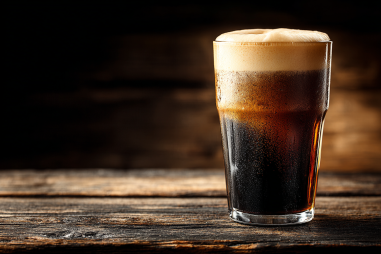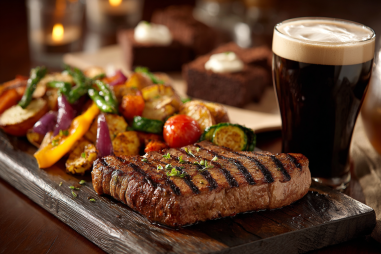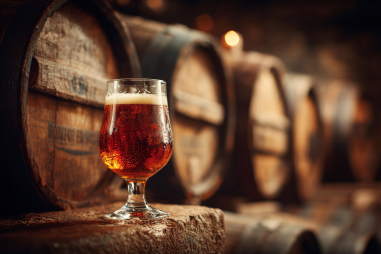American wheat beer stands out in the world of craft brewing due to its unique character, smooth texture, and distinctive flavor profile. While many beer styles emphasize barley malt as their base, American wheat beer prominently features wheat malt — a choice that deeply influences the beer’s mouthfeel and appearance. But the choice of ingredients goes far beyond just wheat malt. From select malt blends and hop varieties to carefully chosen yeast strains and water profiles, each component plays a critical role in crafting an authentic American wheat beer. In this article, we’ll dive into the key brewing ingredients that contribute to this beloved style, exploring how they impact the final product and share tips for sourcing top-quality materials.
The Role of Wheat Malt in American Wheat Beer
At the heart of every authentic American wheat beer lies wheat malt. Unlike barley malt, wheat contributes a distinctive creamy mouthfeel and a slightly hazy appearance that has become synonymous with the style. Wheat malt is prized for its high protein content, which enhances head retention and gives the beer that characteristic frothy, lasting foam.
Wheat malt also imparts subtle flavors — think notes of bread, toast, and a gentle graininess — that create a soft and approachable backbone. These flavor elements complement the light hop bitterness and moderate yeast character, resulting in a balanced and refreshing beer. Typically, wheat malt comprises 30-50% of the grain bill in American wheat beers, depending on the brewers’ desired intensity of wheat character.
Common Malt Blends for American Wheat Beer
While wheat malt provides the foundation, it’s often blended with other malt types to achieve complexity and balance. The primary malt blended with wheat is two-row pale malt, which adds fermentable sugars and a clean malt backbone without overpowering the wheat’s signature traits.
Occasionally, specialty malts are included in small percentages to enhance color and flavor subtly. Examples include:
- Caramel malts: Provide sweetness, slight caramel notes, and deeper amber hues.
- Vienna malt: Adds a toasty, biscuity flavor and a richer color.
- Munich malt: Offers malty sweetness and complexity.
However, brewers often keep specialty malts minimal to maintain the bright, crisp qualities typical of the style. The balance of wheat and barley malt is crucial — too much barley malt can dull the wheat’s creamy texture, while too much wheat can lead to excessive haze or a chewy mouthfeel.
Popular Hop Varieties and Their Flavor Profiles
Hops hold an essential position in defining American wheat beer’s character by contributing bitterness, aroma, and subtle flavor dimensions. Unlike some hop-forward IPAs, the hop profile in American wheat beer tends to be moderate, maintaining balance without overwhelming the malt and yeast nuances.
Some hop varieties frequently used in brewing American wheat beer include:
- Cascade: The quintessential American hop, Cascade imparts bright citrus and floral notes, lending refreshing grapefruit and pine hints that complement wheat malt’s softness.
- Willamette: Known for its earthy, herbal, and mildly spicy aroma, Willamette adds complexity without harshness.
- Centennial: Sometimes called a “super Cascade,” Centennial offers balanced floral and citrus characters, enhancing hop complexity.
- Chinook and Amarillo: For brewers seeking bolder floral or tropical fruit notes, these can be used sparingly.
Generally, American wheat beer features moderate bitterness levels (20-30 IBUs), enough to balance malt sweetness but keep the overall flavor light and drinkable. Late hop additions and dry hopping may also be used to boost aromatic qualities without raising bitterness significantly.
Yeast Strains Ideal for Brewing Authentic American Wheat Beer
Yeast selection is pivotal to the style’s flavor and mouthfeel. Unlike traditional German-style wheat beers which often use specialized wheat yeast strains producing prominent banana and clove esters, American wheat beers tend toward cleaner, more neutral fermentation profiles.
The ideal yeast strain for American wheat beer should:
- Ferment cleanly, allowing malt and hop flavors to shine through.
- Produce mild ester profiles with little to no phenolic spice character.
- Contribute moderate attenuation to create a slightly fuller body.
Common yeast choices include American ale yeast strains such as Wyeast 1056 (American Ale yeast) or White Labs WLP001. Some brewers also opt for wheat ale yeast strains that are less spicy and clove-forward compared to traditional hefeweizen yeast.
Experimentation with yeast is encouraged, as slight variations in fermentation temperature and pitching rate can subtly influence fruitiness and mouthfeel to suit personal or brand style preferences.
Water Chemistry Considerations
Water is often referred to as the “forgotten ingredient” in brewing, yet it has a tremendous impact on the final flavor and drinkability of beer. For American wheat beer, a moderately soft water profile with balanced mineral content works best to highlight malt and hop characters without harshness.
Some key points for water chemistry when brewing American wheat beer:
- Moderate carbonate levels: Avoid overly hard water which can amplify bitterness and create harshness.
- Balanced sulfate-to-chloride ratio: Chloride enhances malt sweetness and mouthfeel, while sulfate accentuates hop bitterness; for American wheat beers, a slightly higher chloride ratio is often preferred to support smoothness.
- Manage pH during mashing: Aim for a mash pH around 5.2-5.4 to optimize enzyme activity and improve extract efficiency, which can also affect flavor clarity.
Many brewers adjust their water through mineral additions like calcium chloride, gypsum, and baking soda to dial in the desired profile. Access to a trusted water report is invaluable in this process.
Special Ingredients and Adjuncts Sometimes Used
While the backbone of American wheat beer remains wheat malt, barley, hops, yeast, and water, brewers sometimes introduce adjuncts or specialty ingredients to create unique twists or enhance certain characteristics.
Some common adjuncts include:
- Fruit additions: Citrus peels, berries, or spices can complement the bright hop and wheat flavors.
- Honey or other fermentable sugars: Used sparingly to lighten body or add subtle sweetness.
- Oats or other grains: Occasionally added to boost mouthfeel and head retention.
These additions are typically employed with restraint to preserve the style’s defining qualities — a smooth, refreshing beer with balanced, subtle complexity.
Ingredient Sourcing and Quality Tips
The quality of your brewing ingredients dramatically impacts the final beer. Here are some best practices for sourcing ingredients for American wheat beer:
- Purchase fresh malt: Look for malt from reputable suppliers and avoid stale or overly old grains that can mute flavor.
- Choose whole-cone or pellet hops carefully: Store hops in vacuum-sealed or nitrogen-flushed packaging and keep them cold to maintain aroma.
- Use yeast from trusted laboratories: Regularly propagate and maintain yeast health to avoid off-flavors.
- Test and adjust water: Use water reports and consider brewing water kits to achieve the best profile.
- Experiment in small batches: This limits waste and allows tweaking of ingredient ratios to suit your taste or brand guidelines.
Investing time in ingredient selection and storage ensures the resulting beer reflects the classic characteristics expected of American wheat beer — smooth, approachable, and flavorful.
Capturing the True Essence of American Wheat Beer
Understanding and respecting the role of each ingredient unlocks the full potential of brewing authentic American wheat beer. From the creamy texture imparted by quality wheat malt to the subtle citrus hop accents, clean yeast fermentations, and balanced water chemistry, every facet works synergistically to create a beer that’s both refreshing and complex.
Whether you’re a homebrewer eager to nail this style or a craft brewery aiming to perfect your flagship offering, focusing on ingredient choice, quality, and balance will yield a brew that embodies the signature smoothness and flavor that fans of American wheat beer crave.







